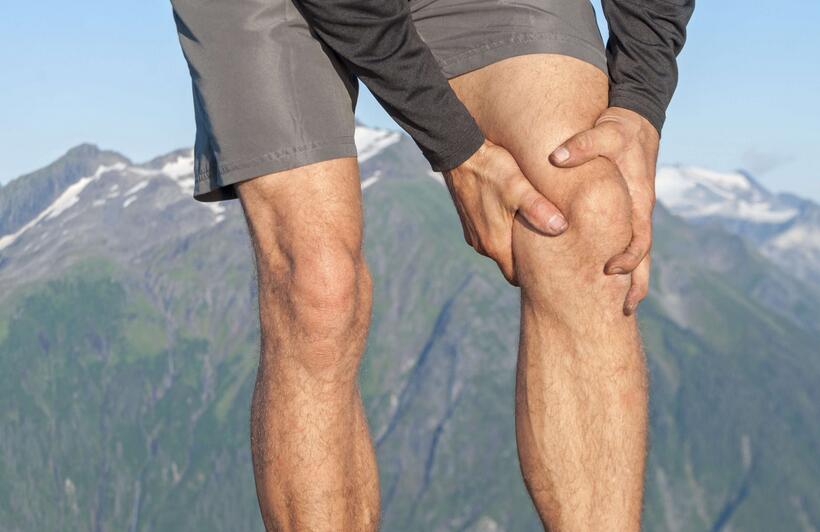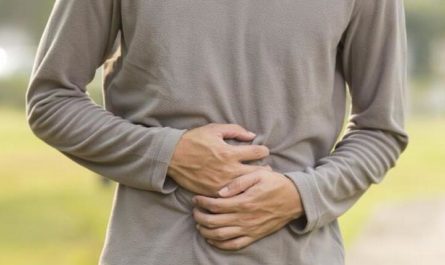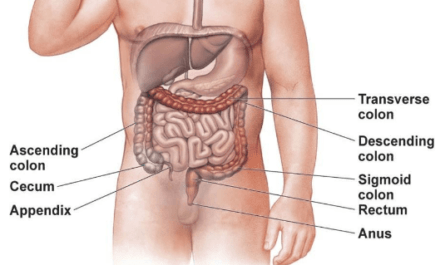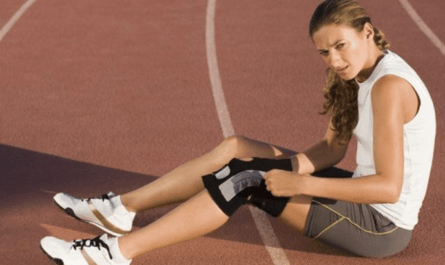Knee pain can significantly affect one’s mobility and quality of life. It is essential to understand the causes, symptoms, and treatment options for knee pain when bending. In this article, we will explore the various aspects of knee pain, including its underlying causes, diagnostic procedures, treatment options, and preventive measures.
Anatomy of the Knee Joint
The knee joint is a complex structure involving bones, cartilage, ligaments, and muscles. The interaction of these components allows for smooth movement and stability of the knee. When any of these structures are damaged or compromised, it can lead to knee pain when bending.
The knee consists of the following key components:
- Bones: The knee joint is formed by the femur (thigh bone), tibia (shin bone), and patella (kneecap).
- Cartilage: Articular cartilage covers the ends of the femur, tibia, and patella, providing a smooth surface for joint movement.
- Ligaments: The knee is supported by four main ligaments – the anterior cruciate ligament (ACL), posterior cruciate ligament (PCL), medial collateral ligament (MCL), and lateral collateral ligament (LCL). These ligaments provide stability to the knee joint.
- Menisci: The knee has two menisci, the medial meniscus and the lateral meniscus, which act as shock absorbers between the femur and tibia.
- Muscles: The quadriceps muscles at the front of the thigh and the hamstrings at the back of the thigh play a crucial role in knee movement and stability.

Symptoms Associated with Knee Pain When Bending
Knee pain when bending can manifest in various ways, including:
- Sharp or shooting pain: Sharp, intense pain in the knee joint during bending can be a sign of a sudden injury or structural damage.
- Dull, aching discomfort: A dull, persistent ache in the knee joint when bending may indicate chronic conditions such as osteoarthritis or tendinitis.
- Swelling or inflammation: Swelling around the knee joint can occur due to an injury, inflammation, or underlying conditions, leading to pain during movement.
- Stiffness or limited range of motion: Difficulty fully bending or straightening the knee joint, along with a feeling of stiffness, may indicate underlying issues such as meniscus tears or ligament injuries.
Common Conditions Leading to Knee Pain
Several conditions can cause knee pain when bending:
- Osteoarthritis: Osteoarthritis occurs when the cartilage that cushions the ends of the bones in the knee joint gradually wears away, resulting in pain, stiffness, and swelling.
- Tendonitis: Tendonitis refers to the inflammation of a tendon, which can cause pain and tenderness around the knee joint.
- Meniscus Tears: The menisci can tear due to sudden twisting or overuse, leading to knee pain, swelling, and difficulty bending or straightening the knee.
- Ligament Injuries: Injuries to the ligaments, such as ACL tears or MCL sprains, often occur during sports activities and can cause severe knee pain, instability, and difficulty bending or bearing weight on the affected knee.
- Bursitis: Bursitis occurs when the bursae, small fluid-filled sacs that cushion the knee joint, become inflamed due to repetitive movements or direct trauma, resulting in knee pain and swelling.
Risk Factors for Knee Pain
Several factors increase the likelihood of experiencing knee pain when bending:
- Age-related changes: The risk of developing knee pain and related conditions, such as osteoarthritis, increases with age. Wear and tear on the knee joint over time can lead to degenerative changes.
- Sports and physical activities: Participation in high-impact sports or activities that involve repetitive knee movements, such as running or jumping, can put stress on the knee joint and increase the risk of injury.
- Overuse or repetitive motion: Repeated stress on the knee joint due to activities like kneeling or squatting can result in knee pain and overuse injuries.
- Obesity and weight-related stress: Excess body weight puts additional stress on the knee joint, increasing the risk of knee pain and accelerating joint degeneration.
- Genetic predisposition: Some individuals may have a genetic predisposition to developing knee pain and related conditions, such as osteoarthritis or ligament instability.
Diagnosing Knee Pain
When evaluating knee pain, a healthcare professional will often perform a comprehensive medical assessment, which may include:
- Physical examination: A physical examination allows the healthcare provider to assess the knee joint’s range of motion, stability, and signs of swelling or tenderness. They may also perform specific tests to evaluate ligament integrity or meniscus tears.
- Patient history: Gathering information about the onset, duration, and characteristics of the knee pain, as well as any previous injuries or underlying medical conditions, helps in determining the underlying cause.
Imaging and Tests
In some cases, imaging tests or additional diagnostic procedures may be necessary to assess the underlying causes of knee pain:
- X-rays: X-rays provide detailed images of the bones in the knee joint, helping identify fractures, joint degeneration, or bone abnormalities.
- MRI scans: Magnetic resonance imaging (MRI) scans use a powerful magnetic field and radio waves to produce detailed images of the knee’s soft tissues, including ligaments, tendons, cartilage, and muscles. This imaging modality can help diagnose conditions such as ligament tears, meniscus injuries, or cartilage damage.
- CT scans: Computed tomography (CT) scans may be used to evaluate complex fractures or assess the bone structure in more detail.
- Ultrasound: Ultrasound imaging uses sound waves to create real-time images of the knee joint’s soft tissues, including tendons, ligaments, and bursae. It can help detect inflammation, fluid accumulation, or other abnormalities.
These diagnostic tests help healthcare professionals make an accurate diagnosis and develop an appropriate treatment plan.
Treatment Options for Knee Pain When Bending
Non-Surgical Treatments
Non-surgical approaches are often the first line of treatment for knee pain when bending. These may include:
- Rest and ice therapy: Taking a break from activities that worsen the pain and applying ice packs to the affected knee can help reduce pain and inflammation.
- Compression bandages and elevation: Applying compression bandages to the knee and elevating the leg can help reduce swelling and promote healing.
- Medications: Over-the-counter analgesics (such as acetaminophen) or nonsteroidal anti-inflammatory drugs (NSAIDs) may provide temporary pain relief. However, it is essential to consult a healthcare professional before taking any medication.
- Physical therapy and exercises: A physical therapist can design a personalized exercise program to strengthen the muscles around the knee joint, improve flexibility, and enhance overall knee function. Physical therapy may include a combination of stretching exercises, range-of-motion exercises, strengthening exercises, and low-impact aerobic activities.
Surgical Treatments
In severe cases or when conservative treatments fail to alleviate knee pain, surgical intervention may be necessary. Surgical options for knee pain when bending include:
- Arthroscopy: Arthroscopic surgery involves making small incisions and using specialized tools to repair or remove damaged tissues within the knee joint. This minimally invasive procedure allows the surgeon to visualize the joint and perform necessary procedures, such as meniscus repair or removal, ligament reconstruction, or cartilage restoration.
- Partial or total knee replacement: Knee replacement surgery may be recommended for advanced joint degeneration, severe pain, and functional limitations. During this procedure, the damaged portions of the knee joint are replaced with artificial components (prostheses) made of metal and plastic.
The decision to undergo surgery depends on various factors, including the underlying cause of knee pain, the extent of joint damage, the individual’s overall health, and their goals for pain relief and functional improvement.
Preventing Knee Pain When Bending
Making certain lifestyle changes can help prevent knee pain when bending and maintain overall knee health:
- Maintain a healthy weight: Excess body weight places additional stress on the knee joint, increasing the risk of knee pain and accelerating joint degeneration. By maintaining a healthy weight, individuals can reduce the strain on their knees.
- Choose supportive footwear: Wearing appropriate footwear that provides adequate cushioning, stability, and arch support can help reduce the impact on the knee joint during activities.
- Avoid high-impact activities or modify them: High-impact activities such as running or jumping can put significant stress on the knee joint. Engaging in low-impact exercises like swimming or cycling, or modifying high-impact activities to reduce knee stress, can help prevent knee pain when bending.
Strengthening Exercises
Specific exercises can help strengthen the muscles around the knee joint, providing better support and reducing the risk of knee pain when bending. These exercises may include:
- Quadriceps strengthening exercises: Strengthening the quadriceps muscles at the front of the thigh helps stabilize the knee joint. Examples of exercises include straight leg raises, squats, and lunges.
- Hamstrings strengthening exercises: Strengthening the hamstring muscles at the back of the thigh helps balance the forces acting on the knee joint. Exercises such as hamstring curls or bridges can be beneficial.
- Low-impact aerobic exercises: Engaging in low-impact exercises like swimming, cycling, or using an elliptical machine can improve cardiovascular fitness without putting excessive stress on the knees.
- Regular stretching routines: Incorporating regular stretching exercises into a fitness routine helps maintain flexibility and prevent stiffness in the knee joint. Examples include quadriceps stretches, hamstring stretches, and calf stretches.
By incorporating these exercises into a regular fitness regimen, individuals can strengthen the muscles around the knee joint and enhance knee stability.
Home Remedies and Alternative Therapies
Home Care Strategies Certain home remedies and self-care measures can help alleviate knee pain when bending:
- R.I.C.E method (Rest, Ice, Compression, Elevation): Resting the knee, applying ice packs for 15-20 minutes at a time, using compression bandages to reduce swelling, and elevating the leg can aid in pain relief and promote healing.
- Over-the-counter pain relievers: Non-prescription pain medications such as acetaminophen or NSAIDs (e.g., ibuprofen) can provide temporary relief from knee pain. It is important to follow the recommended dosage and consult a healthcare professional before taking any medication, especially if there are any underlying medical conditions or if currently using other medications.
Alternative Treatments
Some individuals find alternative therapies helpful in managing knee pain when bending. These may include:
- Acupuncture: Acupuncture involves the insertion of thin needles into specific points on the body. It is believed to stimulate the body’s natural healing response and may provide pain relief for some individuals with knee pain.
- Massage therapy: Massage therapy can help reduce muscle tension, improve blood circulation, and promote relaxation. It may provide temporary relief from knee pain and stiffness.
- Herbal supplements: Certain herbal supplements, such as turmeric or ginger, are believed to have anti-inflammatory properties. However, it is important to consult a healthcare professional before starting any supplementation to ensure safety and avoid potential interactions with other medications.
It is crucial to note that alternative treatments should be used as complementary therapies and not as a substitute for medical advice or prescribed treatments.
Rehabilitation and Recovery from Knee Pain
Post-Treatment Recovery Plan
After surgical or non-surgical treatment, a rehabilitation plan is crucial for a successful recovery:
- Physical therapy: A physical therapist will design a personalized rehabilitation program to restore strength, flexibility, and range of motion in the knee joint. This may involve specific exercises, stretches, and manual therapy techniques.
- Gradual return to activities: It is important to follow the guidance of the healthcare professional regarding the gradual return to activities and sports. This helps ensure a safe and sustainable recovery while reducing the risk of reinjury or complications.
Long-Term Management
Ongoing self-care and management strategies can promote long-term knee health:
- Continuing prescribed exercises and stretches: Following the completion of formal physical therapy, it is important to continue with the prescribed home exercise program to maintain strength, flexibility, and stability in the knee joint.
- Regular check-ups with healthcare professionals: Routine follow-up visits with healthcare professionals allow for monitoring the progress of knee health, addressing any concerns, and making necessary adjustments to the management plan.
By incorporating these measures into a long-term management plan, individuals can optimize their knee health and minimize the risk of future knee pain or injuries.
When to Seek Medical Attention?
While occasional knee pain may resolve on its own with rest and self-care, certain symptoms warrant medical attention:
- Severe or persistent pain: If the pain is severe, debilitating, or does not improve with rest and self-care measures, it is essential to seek medical evaluation.
- Swelling that worsens or does not resolve: Persistent or worsening swelling around the knee joint may indicate an underlying condition that requires medical attention.
- Inability to fully bend or straighten the knee: Difficulty bending or straightening the knee joint, or a feeling of locking or catching during movement, may suggest meniscus tears or other structural issues.
- Instability or giving way of the knee: If the knee feels unstable or gives way during bending or weight-bearing activities, it may indicate ligament injuries or joint instability.






